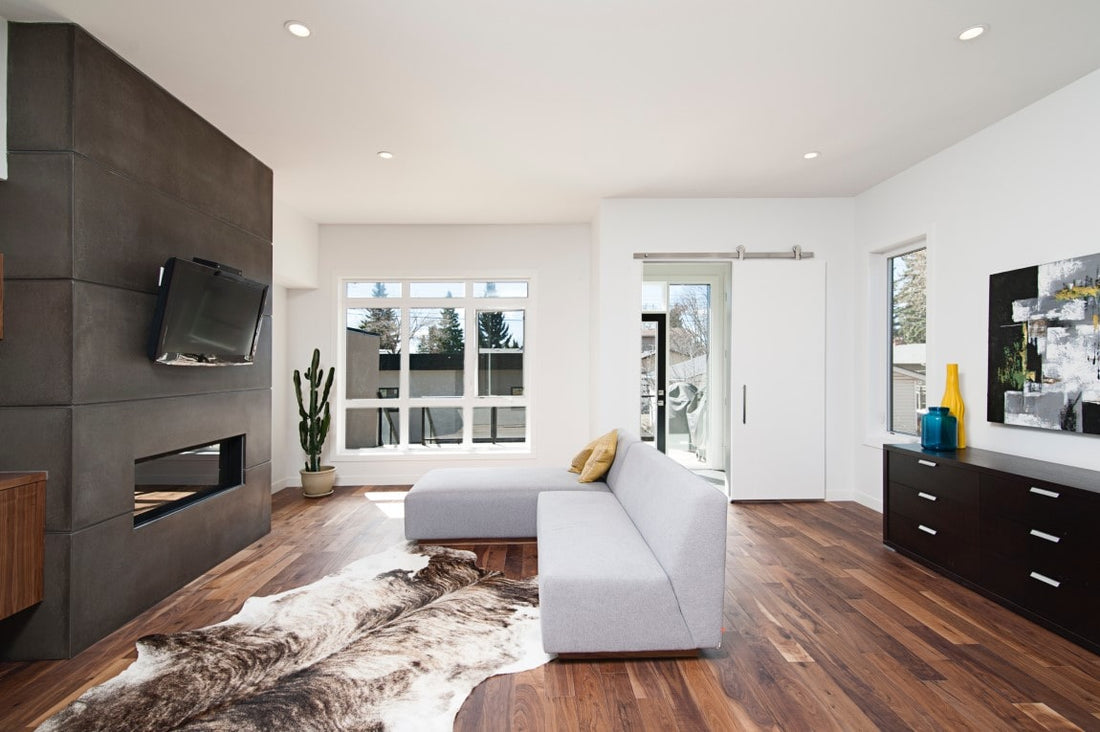Home Interior Design Styles: What is Modern Design?
A look at the elements of modern design
By RaShea Drake
July 31, 2019
*We asked multiple interior designers questions about the most popular interior design styles. When you've finished reading about modern interiors don’t forget to check out the rest of the series at the Vevano Home Blog.
A Brief History
Modern design came about during the 19th century when building and architecture hit new heights, both literally and figuratively. With the help of steel, concrete, and machinery, new buildings could be constructed faster and higher than they had before. With this new exterior design came with it a new design for the interior as well as a name to describe this movement. It became known as modern design. Modernistic styles, including minimalism and mid-century modern, take inspiration from Scandinavian designs. Design is simple yet functional, beautiful in its use of straight lines.
Form Follows Function - The Definition of the Modern Interior Style
Clean modern design, in its simplest form, revolves around the phrase form follows function. Another popular descriptor is the French phrase raison d’être, which means “reason to be”. Furniture and décor are not only useful but beautiful and purposeful in design and placement. When planning for a modern interior, Vevano’s Director of Product and Design, Martha McNamara, has some advice. “Modernistic style really comes down to two things: simplicity and functionality. Make sure everything has a purpose.”
Characteristics of Modern Interior Design
When planning a more modern layout Stephanie Purcell, Interior Designer at Redesigned Classics, says “Keep your floor plan open and airy.” She goes on to explain, “The modernist style is all about less being more. When in doubt just keep it simple.”
We compiled the hallmarks of modern interior design trends by design, color, and décor. We also made a quick graphic about modern interior design characteristics you can reference or save below.
“Natural light is key to achieving a Modern interior style. Windows open up the room and help to provide those essential vertical and horizontal lines.” – Martha McNamara, Vevano Director of Product and Design
- Design is clean with an emphasis on straight lines that are vertical or horizontal.
- Rooms are a mix of industrial and natural elements. Pairing steel elements and fixtures with wood finishes or leather furniture is common.
- Open areas are embraced, with openness utilized just as much as any décor.
- Natural light is a big element. Window treatments such as curtains or shades should be minimal to nonexistent.
Color Palette:
“When it comes to colors, neutral tones should take priority, followed by shades of white, then black. Embrace natural elements such as wood grain and leather.” – Martha McNamara
- The main color palettes are various shades of neutrals, whites, and black.
- Accent colors are focal points for the eye to settle on. Bold colors are welcomed, many use primary colors such as blue, yellow, or red.
- Reflective surfaces and fixtures are perfect. Embrace glass, steel, and chrome finishes.
Décor:
“Avoid mixing and matching patterns, fabrics, and textures. This is not a style conducive to layering.” – Stephanie Purcell, Redesigned Classics
- A few statement pieces of art are welcomed, with ether minimal frames or frameless. Art pieces are also a perfect time to use the accent color to tie in the room.
- Avoid extra ornamentation or complicated detailing.
- Shelving is often inset or floating to maintain clean lines.
Contemporary vs Modern Design: Is There a Difference?
Modern and contemporary seem as if they should be synonymous, and in traditional English definitions, they are. However, when it comes to design they are each their own separate style.
So, What's the Difference?
Modern refers to a period of art and design, rooted in history for more than a century. Artists such as Pablo Picasso, Georgia O’Keeffe, and Andy Warhol helped to bring in the next evolution of art. Others like Charles and Ray Eames redefined architecture and design. Modern aesthetic gained popularity in the 1930s, and it practically defined the decorative style of the ‘60s. It continues on today with a fresh new look, but with the same emphasis on simplicity.
Contemporary, on the other hand, doesn’t refer to a specific style in history or have any solid rules. It purely refers to whatever is the style at the moment.
Conclusion
Now you know what modern interior design is, where it came from, and how it differs from contemporary design. Want to learn more? Check out the rest of the Vevano Home Blog, you may be interested to find out more about contemporary or traditional design next.










